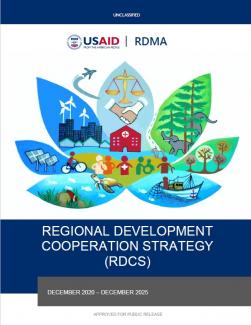USAID Regional Development Mission for Asia’s (RDMA) Regional Development Cooperation Strategy (RDCS) 2020-2025 presents USAID’s regional approach in Southeast Asia with a particular emphasis on the Lower Mekong subregion. The strategy was founded upon the U.S. vision for a free and open Indo-Pacific. To support USG priorities of enhancing economic prosperity and ensuring peace and security in the region, RDMA will partner with regional organizations to address transboundary challenges. The RDCS goal is a more resilient, inclusive, and secure Southeast Asia.
The new strategy lays the path for improved partnerships and more sustainable development outcomes. RDMA’s goal will be achieved through four regional development objectives (RDOs), each of which focuses on regional programming:
- RDO 1: Regional Collective Action to Defend Human Rights Increased
- RDO 2: Regional Economic Connectivity Strengthened
- RDO 3: Regional Environment and Energy Systems Strengthened
- RDO 4: Regional Response to Health Threats Improve
As a regional Mission, RDMA will engage at the regional level to advance RDCS objectives in three ways. First, RDMA will leverage its regional role to engage directly with like-minded counterparts to champion American values in multilateral forums. Second, RDMA’s programs will amplify and augment the work of bilateral USAID Operating Units by engaging regionally, transcending domestic development challenges. Third, RDMA will encourage aspiring, like-minded partners, such as Thailand, by elevating their role within the region and co-designing programs focused on trilateral cooperation. USAID looks forward to partnering with regional bodies, institutions, and other actors to advance these priorities. Throughout RDCS implementation, USAID will focus on collaborating, learning, and adapting to respond to new opportunities and challenges, particularly in the context of the COVID-19 pandemic.
This RDCS was developed and finalized in 2020 as COVID-19 became a global pandemic. USAID/RDMA will continue to monitor its potential impact and if needed, the Mission will re-evaluate the strategic approach.

